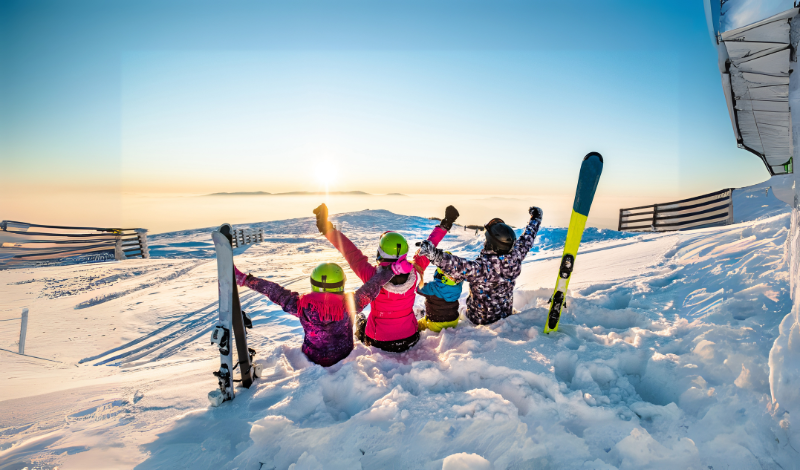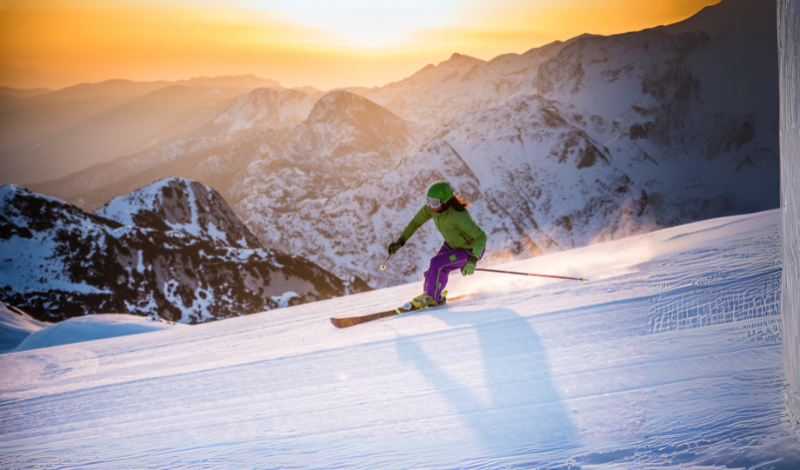Skiing is an electrifying winter sport that encompasses mountain adventure and joy over fresh powder snow. For beginners, it is but natural to feel apprehensive and not only because of skiing techniques for beginners, but also about what to wear. Wearing proper clothing is important for one’s safety and comfort. We’ll also highlight key gear essentials and introduce Halfdays, a popular brand known for stylish, high-performance ski wear designed specifically for women. Whether you’re preparing for full days on the mountain or short half-days, this guide has you covered from head to toe.
This guide is designed to help you prepare with ease, offering skiing advice for beginners and focusing on functional, warm, and layered clothing suitable for snowy conditions.

Why Proper Ski Clothing Matters
Skiing lessons entail a multitude of movements and temperature changes. You are probably feeling cold on the lift, warm when skiing, and soaking wet with snow when you fall (and you will—it’s part of the fun!). Proper clothing allows for comfort regardless of temperature extremes, leaving your mind free to work on beginner skiing techniques rather than shivering or overheating.
The Golden Rule of Ski Clothing
One of the most important skiing tips for beginners is to dress in layers. These layers trap heat, wick away sweat, and block wind and moisture.
Base Layer – Moisture Management
The base layer is something that is worn next to the skin and is needed for moisture-wicking. As a newbie, chances are you are going to sweat a little more than you would have imagined owing to physical exertion and a bit of nervous energy. Cotton is a big no-no because it absorbs moisture, leaving you cold. Instead, go for synthetic or merino wool for your base layers.
Middle Layer – Insulation
This layer retains body heat. Depending on the weather, you may go for fleece jackets, down vests, or synthetic insulation layers. For your legs, most ski pants already have insulation, so a base layer underneath is usually sufficient.
Outer Layer – Weather Protection
The outer layer is your shield against wind, snow, and water. Look for waterproof and breathable jackets and pants designed for skiing. These garments often come with snow skirts, vent zippers, and reinforced seams.

Skiing Advice for Beginners
When you learn to ski, falling is inevitable. That means your clothing needs to handle snow contact. Waterproof outer layers will prevent you from getting soaked. Your first skiing experience is also full of stops, starts, and possibly long chairlift rides, so keeping warm while inactive is just as important as staying cool while active.
Here are some quick skiing techniques for beginners:
- Choose ski gear with ventilation zippers to regulate your body temperature.
- Look for jackets with powder skirts and adjustable cuffs to keep snow out.
- Keep your phone and valuables in inner waterproof pockets or a ziplock bag.
Tips on Skiing for the First Time
Now that you’re dressed for success, here are some snow skiing tips for beginners that will help you on the slopes:
- Rent Equipment: For your first few trips, rent skis, poles, and boots from a ski shop. Professionals will help you get the right fit and size.
- Take a Lesson: Learning from an instructor is one of the best skiing tips for beginners. They’ll teach you correct posture, how to stop, and how to fall safely.
- Practice Falling: Yes, you’ll fall. And that’s okay. Practice getting up from a fall so you don’t panic on the slope.
- Start on Green Runs: These are the easiest and flattest slopes. Perfect for learning basic skiing techniques.
- Use Sunscreen: Snow reflects sunlight. Even on cloudy days, you can get sunburned.
Essential Ski Accessories for Beginners
Proper accessories are just as important as the main clothing items. These extras will significantly enhance your comfort and safety on the slopes.
Ski Gloves or Mittens
Make sure they are waterproof and insulated. Mittens tend to be warmer, while gloves provide more dexterity.
Ski Helmet
Safety comes first. A helmet not only protects your head but also keeps it warm. Most ski resorts rent them, so you don’t need to buy one immediately.
Goggles
Ski goggles shield your eyes from snow glare, wind, and UV rays. Choose goggles that fit well with your helmet and offer good visibility.
Conclusion
For a novice skier, one must keep warm, dry, and comfy on the slopes, and to do so, one needs to wear the right gear. Stick to moisture-wicking base layers, insulating mid-layers, and waterproof outer shells; also, do not forget your gloves, goggles, and ski socks. With an abundance of brands offering lifestyle discounts, one can easily procure good ski gear without breaking the bank. Dress smart, stay safe, and cherish every moment of your skiing experience!
FAQs
Do I need to buy ski clothes, or can I rent them?
If it’s your first time, renting or borrowing is a smart and budget-friendly choice. Many ski resorts offer rentals for ski jackets, pants, and sometimes even goggles and helmets. Once you fall in love with skiing, you can invest in your gear.
Can I wear jeans or regular pants while skiing?
No, jeans and regular pants will get wet quickly and offer no insulation. Ski pants are designed to be waterproof and wind-resistant, keeping you warm and dry all day on the slopes.




